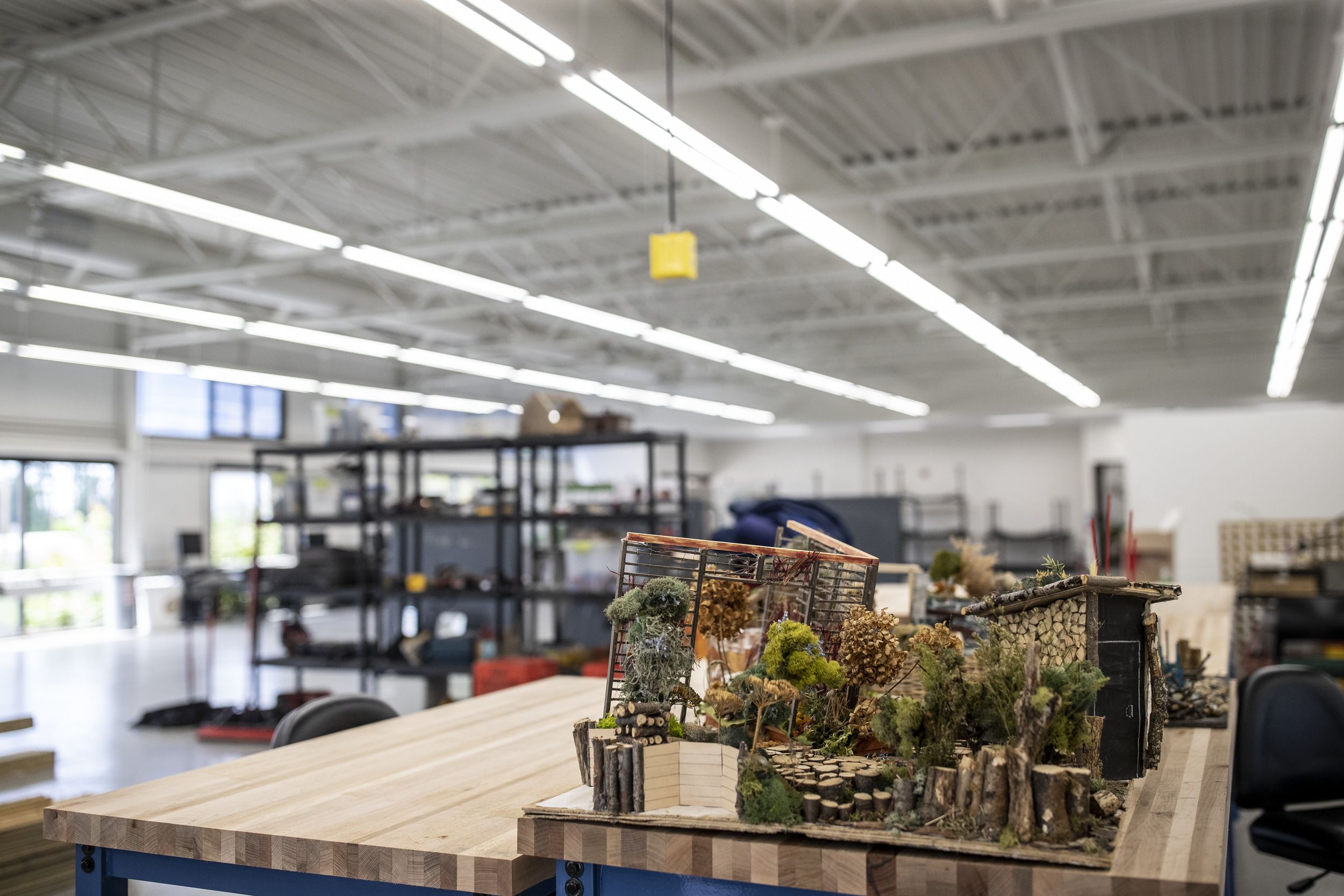Weathering the storm
One year after an EF2-level tornado hit campus, Temple University’s Ambler Campus is finding its footing with a renewed sense of purpose and commitment to research and conservation.

Winter ran a little long last year in southeastern Pennsylvania. In late April, Philadelphia even recorded its latest official freeze in 34 years.
For Kathy Salisbury and all of the students, faculty and staff members at Temple University’s Ambler Campus, winter felt even longer. The community there was still recovering from when a EF2-level tornado, spawned from the remnants of Hurricane Ida, passed through the center of the Ambler Campus on Sept. 1, 2021.
“Passed” is arguably too tame of a word. Trampled is more appropriate as when the tornado and its 130-mile-per-hour winds went through campus, it severely damaged buildings and either uprooted or destroyed hundreds of trees. For three weeks, Campus Safety Services and its many police officers worked around the clock to secure the site while Temple Facilities Management and dozens of contractors set about clearing the mountain of debris.
The beautiful greenery that had been a hallmark of Temple Ambler since its inception was suddenly gone. For months, Salisbury and her colleagues were left to wonder if it would ever return.
“We were really all holding our breath, just waiting,” said Salisbury, director of the Ambler Arboretum of Temple University. “We had not yet seen leaves, and then, suddenly, one day they were there. That was such a great feeling.”
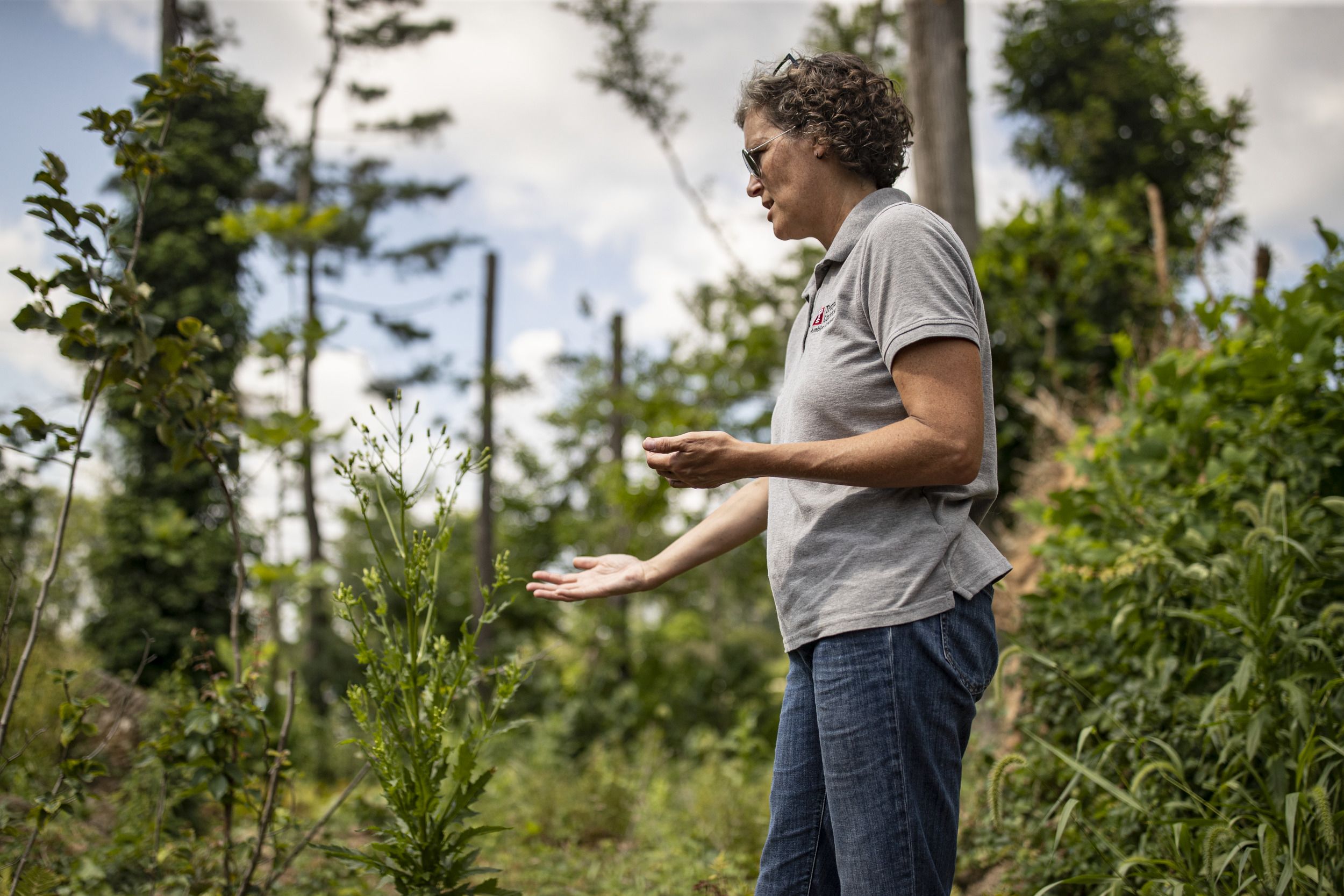
‘It almost looks like a Dr. Seuss tree’
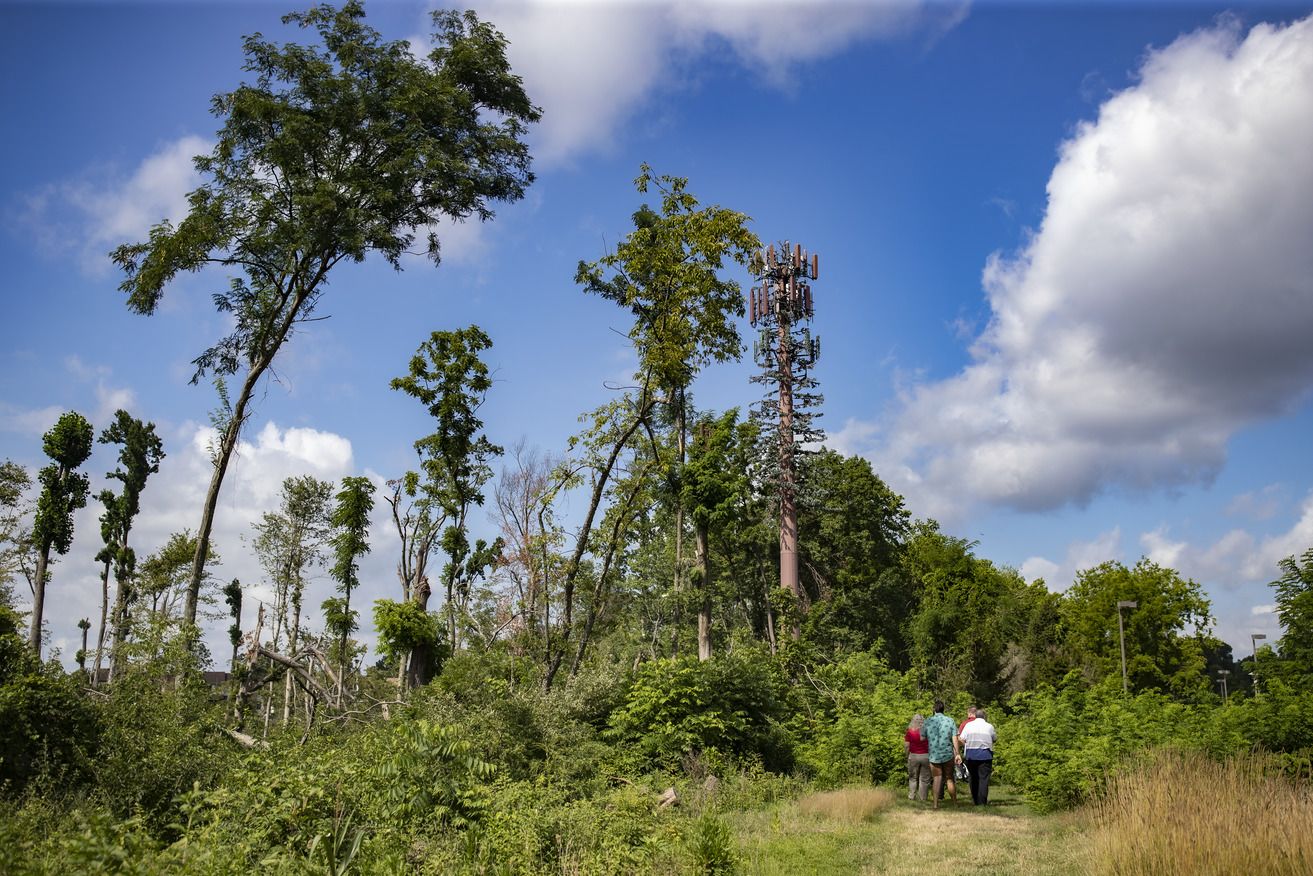
The tornado’s impact has arguably been most noticeable within the old-growth forest at the Temple Forest Observatory. Prior to that day in September, the observatory was flush with more than a thousand trees. Today, that thousand is more like hundreds, but there is less of a focus on what has been lost and more of an emphasis on what has been gained.
The observatory continues to be used as a disturbance lab, and field-based courses are being held there. Considerable student and faculty research is also underway and researchers from other universities, including Rutgers University and the University of Pittsburgh, have reached out and will also be conducting studies on the forest.
“It’s very unique. We are an eastern deciduous forest in southeastern Pa. that was struck by a tornado, and because this was a research site, we had very detailed data on the forest before the storm,” said Amy Freestone, director of the Temple Ambler Field Station. “Now, we’re going to be able to collect all kinds of new data as the forest recovers, and I cannot think of another place where that’s occurred, quite frankly. It’s a wonderful research opportunity for our students, our faculty and for our research collaborators.”
“This forest is not being altered in any way, and we’re letting nature do its own recovery,” added Mariana Bonfim, a research assistant professor and assistant director of the Temple Ambler Field Station. “These storms are natural and becoming both more destructive and more frequent in this part of the country, so this gives us the unique opportunity to understand an ecosystem’s resilience. We cannot ignore that this tornado was caused by climate change, but now we have an opportunity to show exactly what climate change looks like.”
One of the early studies that has been done at the site analyzes how a tornado disturbance impacts avian biodiversity. The study, which was conducted by Freestone, Bonfim, Ecology, Evolution and Biodiversity student Colin Lynch, and research technician Daniel Taratut found that different bird species are abundant in the disturbed old growth forest in comparison to a similar neighboring traditional forest in Upper Dublin Township.
“We have seen more than just a change in the bird community, we have also seen a change in the mammal community, especially with smaller mammals. We’re seeing more chipmunks, groundhogs, racoons, squirrels, foxes and even coyotes,” Freestone said. “This is a really valuable habitat right now, and that habitat is going to change as the forest recovers. It’s pretty dynamic now, which is different than prior to the storm. We’re going to be seeing changes regularly over the next several years, which provides us with so many unique research opportunities.”
The trees that do remain standing within the old-growth forest look different from what was there previously. The heavy winds from the tornado had knocked off many of the branches and leaves.
Now, these trees look a little leaner, but they are still a sight to behold, especially as leaves start to grow back.
“It almost looks like a Dr. Seuss tree,” said Jim Duffy, content manager for Temple University Ambler.
Indeed, the trees conjure up visions of truffula trees, the iconic, colorful trees that are mentioned regularly throughout Dr. Seuss’ “The Lorax.” Within that book, the overarching theme is that we must all do our part to conserve and protect nature. It feels more than a little apropos that visitors to the Temple Forest Observatory might see these trees and be reminded of that same message.
‘We want to be really intentional’
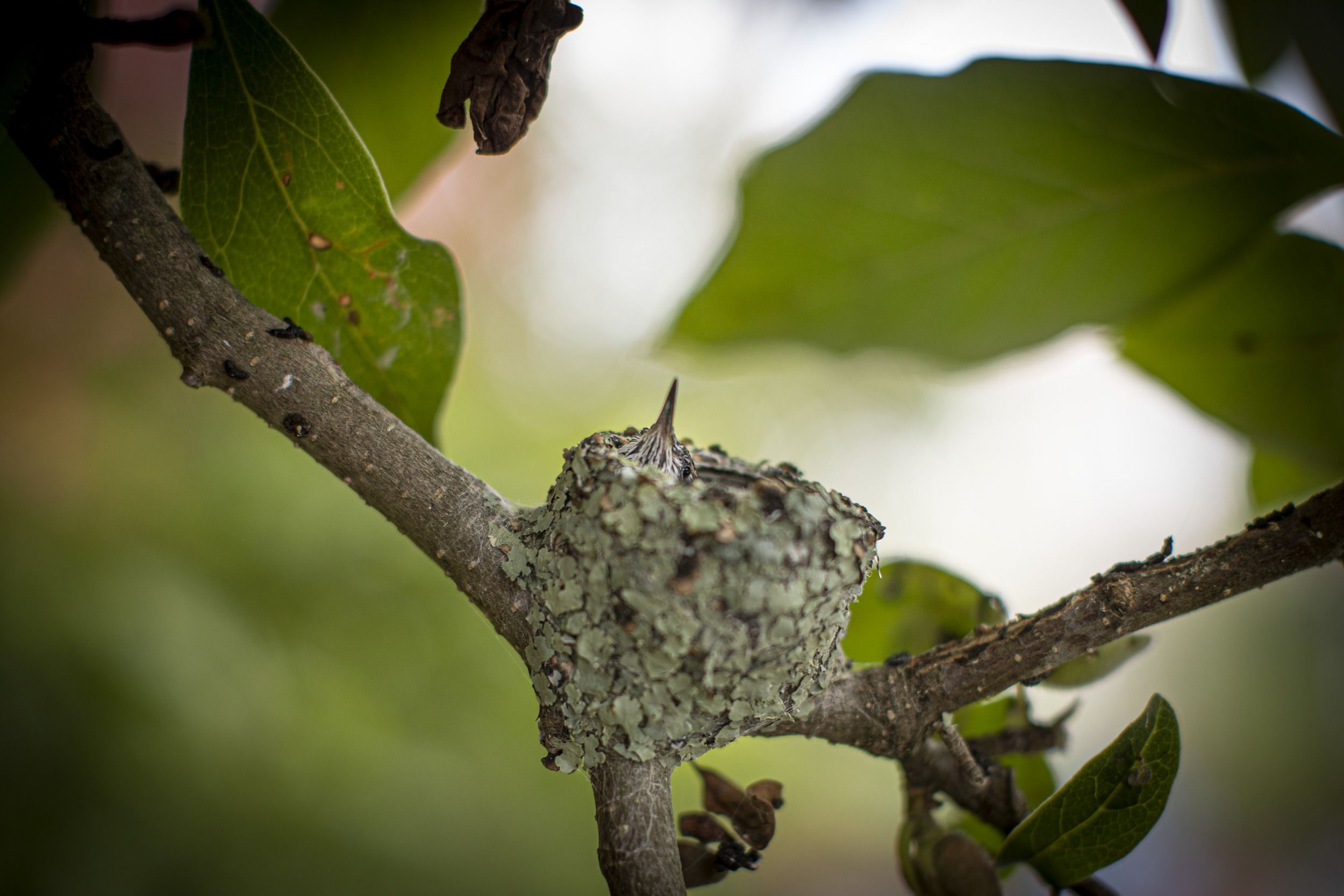
In the past, the Ambler Arboretum was always known for its shady canopies. Cool breezes were a constant for guests as they walked throughout the heavily-wooded areas.
Today, there’s a lot more sunlight, and the views are entirely different. As the campus has become more open, it has brought with it a greater prevalence of some animal species. Hummingbirds and woodpeckers, for instance, are now seen and heard far more frequently than in the past.
Since the tornado hit, Salisbury, students and other staff members have planted more than 100 new trees on campus, and these trees are being installed with an eye toward the future. Rather than just replace trees that were lost, the group has planted specific trees and plants with an idea of what will work in the future, following where the climate is heading.
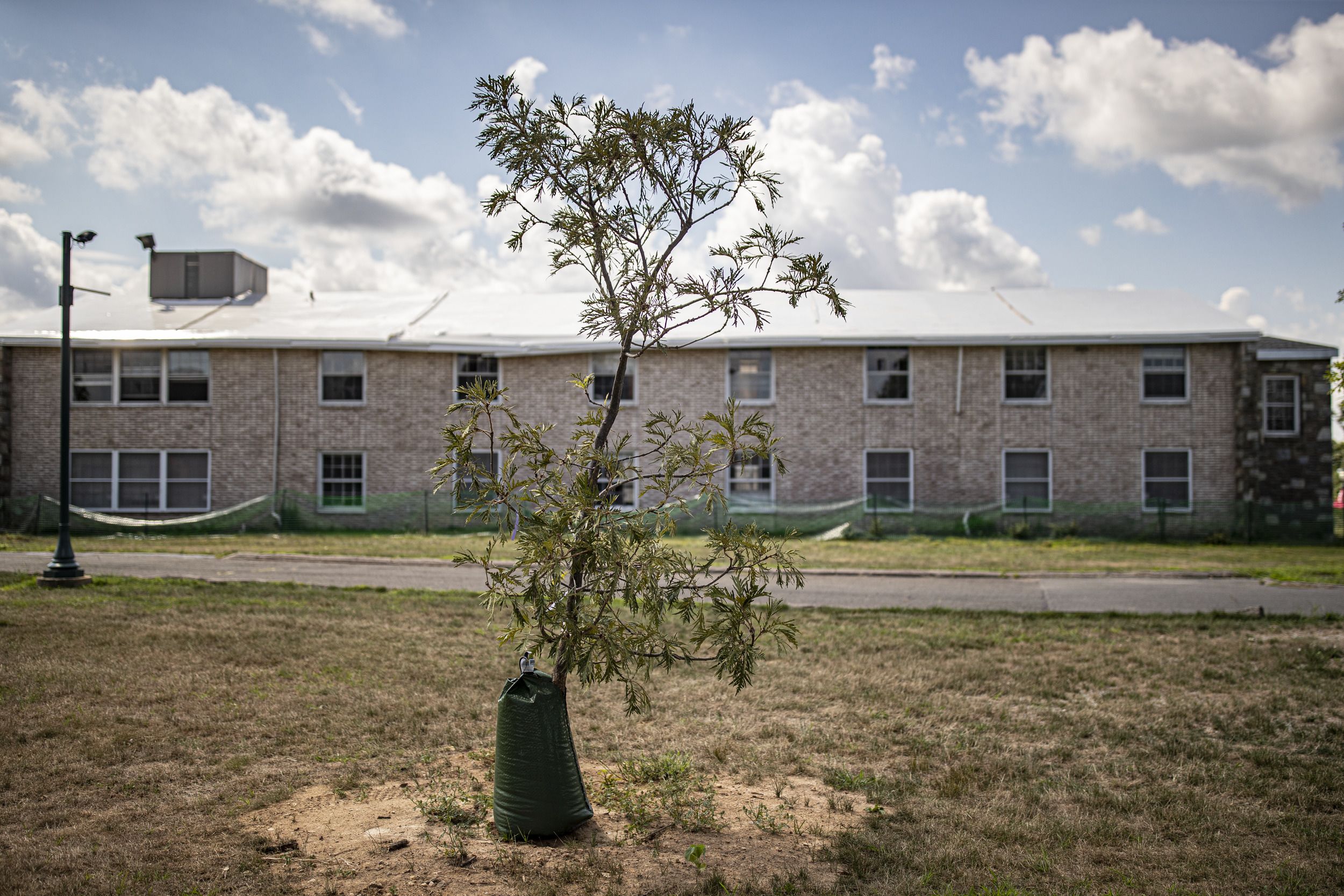
“We want to be really intentional,” Salisbury said. “The trees that were lost spanned two generations, so in replanting, we want to show what a climate-resilient landscape looks like. Our trees and plans can help mitigate climate change for the two generations to come.”
One of the student gardeners who has played a key role is Frankie Napoli, a junior horticulture major.
“A lot of my college experience has been shaped around recovery,” Napoli said. “There are so many new lessons that we could not have ever imagined that we would get to learn, and I will say that the full advantage has been taken of every educational opportunity.”
‘An incredible use of an existing space’
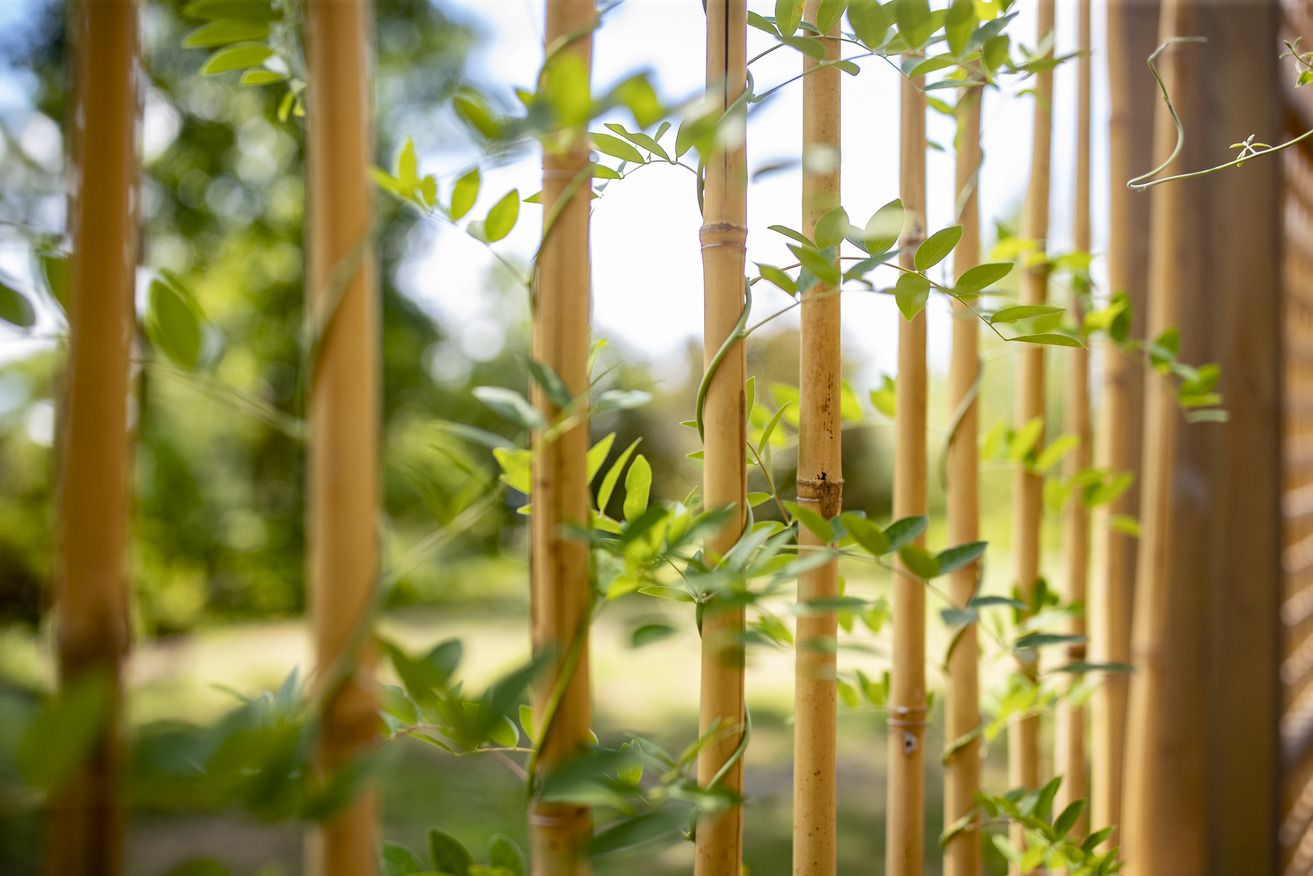
For many years, the Landscape Architecture and Horticulture programs of the Tyler School of Art and Architecture, have had a major presence at the Ambler campus. That presence has only grown during the past year, as the campus’ recovery has been used as a teaching tool, providing students with some unique hands-on, experiential learning opportunities.
One example of this was Special Topics in Site and Context, an inaugural course in the Tyler Summer Design-Build Institute, which was held this summer. A total of 19 Master of Architecture graduate students spent time designing and constructing three sculptures that have since become permanent installations at Temple University Ambler, the Ambler Arboretum and the Temple Ambler Field Station. The sculptures were designed specifically with wildlife in mind.
The Waggle Run, for instance, is a new habitat for endangered bumblebees, which includes rib-like structures that will allow flowers to grow through it and attract bees. The Melody is a wildlife installation for the wood thrush, a type of bird that is known to sing 50 different types of songs. Finally, the Tree House utilizes wood reclaimed from several downed trees, which has been placed in a circular design, so that animals will be able to use it for shelter and habitat.
“This was really special as it was a collaborative effort where students relied on input from the biology department and the Arboretum,” said Sasha Eisenman, associate professor of horticulture and chair of architecture and environmental design. “The students spent a lot of time researching the various species, and this really went outside their normal comfort zone. What’s special about this project is that it allowed them to provide new habitats for animals that still exist here, but who have had to deal with a dramatically-changed landscape over the past year. This helps them.”
Tyler students also played a key part in Temple Ambler repurposing an existing structure. In the past, these students would participate in building exhibits for the Philadelphia Flower Show but that was not possible this year due to the COVID-19 pandemic. Instead, they found an opportunity at Ambler.
“Despite all of the beautiful greenery across Ambler’s arboretum, one thing that had been missing was a way to really display vines,” Eisenman said. “What was great was our students were able to take an existing structure that had been here for decades, and create a really amazing new use of the space.”
The Junior Design-Build Studio's project was called Design for Vines, and it tasked them with designing and constructing a new Vine Display Garden in the Ambler Arboretum, specifically utilizing one of the structures damaged by the tornado. The structure now displays several different vines and uses a number of different types of wood, including bamboo and cedar.
“This is a really great community gathering space that is only going to improve over time as the vines continue to grow. It’s going to be put to good use for years,” Eisenman said.
A new low ropes team connections course
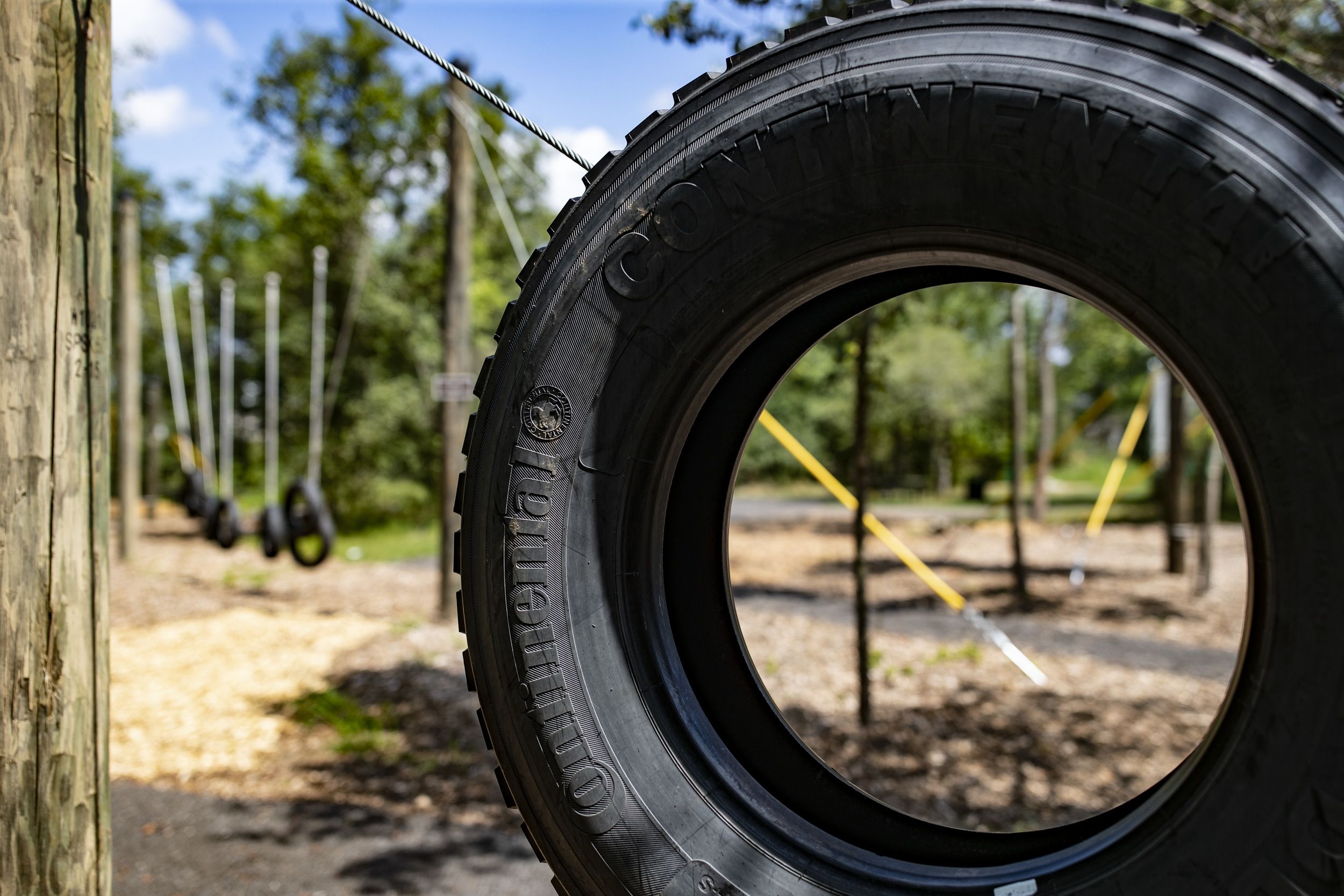
As Ambler moves past the tornado, one of its priorities is making the campus an inviting space for the entire Temple community. One way that it hopes to do that is through the launch of a new low ropes team connections course.
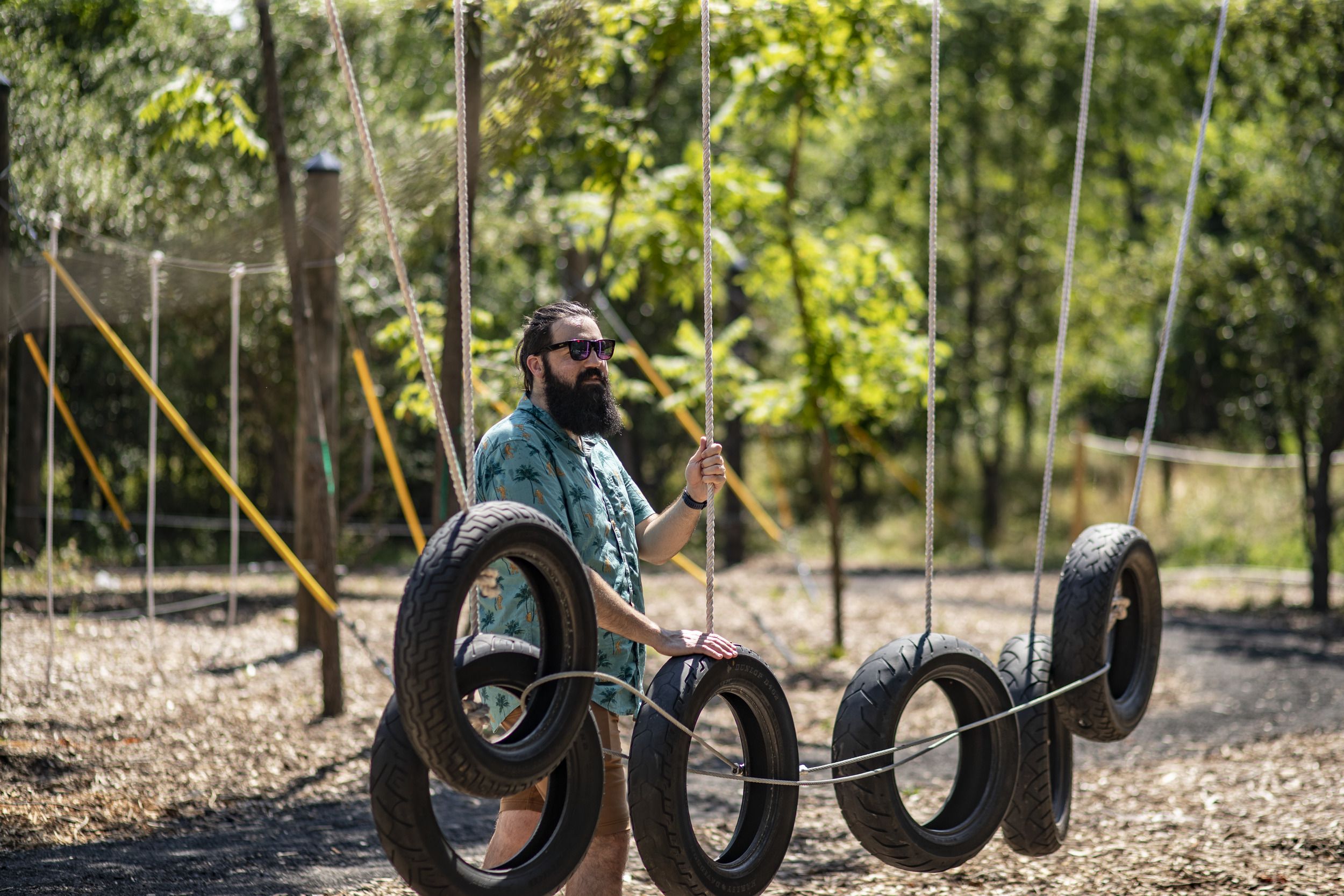
Steve Sassaman recently joined Temple Ambler as its assistant director of recreation services and outdoor experiential education. In this role, he will oversee the new low ropes team connections course.
“There is a lot of new research that shows that even sitting under a tree or walking through a forest helps release endorphins,” Sassaman said. “We want to really make this campus and this ropes course accessible for all Temple students. We’re even planning a fall wellness day to invite students out here to try the course.”
With the new low ropes course, Temple also hopes to engage the community through non-credit offerings. Student groups now have a new favorite activity available to them for when they want to get away for the weekend, as well.
“We’re planning now for some non-credit courses,” said Beth Shepard-Rabadam, associate director of Temple Ambler. “We’re also focused on working with various student organizations to see how they can use the course. We want to bring students to campus to experience the outdoors, and we think this is a great way to do that.”
An eye toward the future
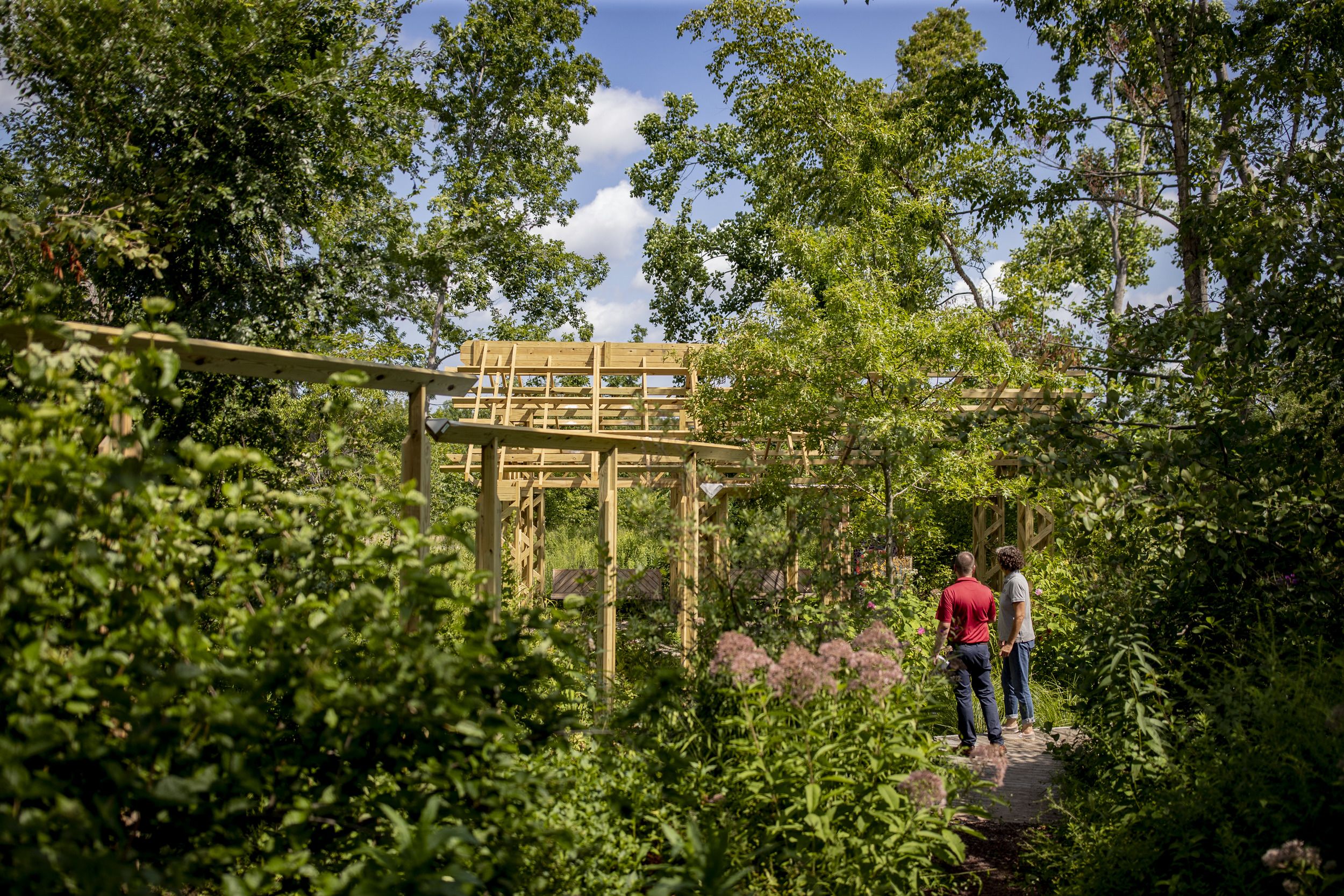
Almost one year to the day that a tornado barreled through Temple Ambler, Vicki Lewis McGarvey, who was a calm, steadying voice in leading the campus during this past year, walks toward what was the Temple University Ambler Library Building.
“We’re really excited about this space,” McGarvey, vice provost for Temple’s University College and director of Temple Ambler, said with a smile.
The building was one of many that suffered significant damage from the tornado, but it’s now back up and running. It even now carries a renewed purpose as the new Ambler Research + Collaboration Building.
Within the building is the Innovation Studio, a new multi-disciplinary open laboratory that lends itself to collaboration. Student gardeners have used the space to create Temple’s exhibit for the 2022 Flower Show, architecture students have created the sculptures used for the Tyler Summer Design-Build Institute, landscape architecture students used it to create the Vine Display Garden and engineering students used it to prepare for the annual Steel Bridge Competition. The Field Station also uses the building as the main hub for their research and operations.
One year ago, creating this type of collaborative space within the Ambler Campus would have been a pipe dream. Today, it is arguably the busiest space on campus.
“The one thing that the tornado has allowed us to do is look at our operations and our campus differently,” McGarvey said. “We never had anything like this before, and we believe that this is something that will draw even more campus partners to Ambler. There are so many opportunities to collaborate and Ambler is such a unique place. We are already seeing so many multi-disciplinary research opportunities taking place, but we think this is just the beginning. I hope we continue to see more of that in the years to come, and the Ambler Research + Collaboration Building is vital to ensuring that’s the case.”
A new addition to the Ambler Campus is the Ambler Research + Collaboration Building. The space resides in what was formerly the Temple University Ambler Library Building and has been designed to specifically foster interdisciplinary collaboration.
